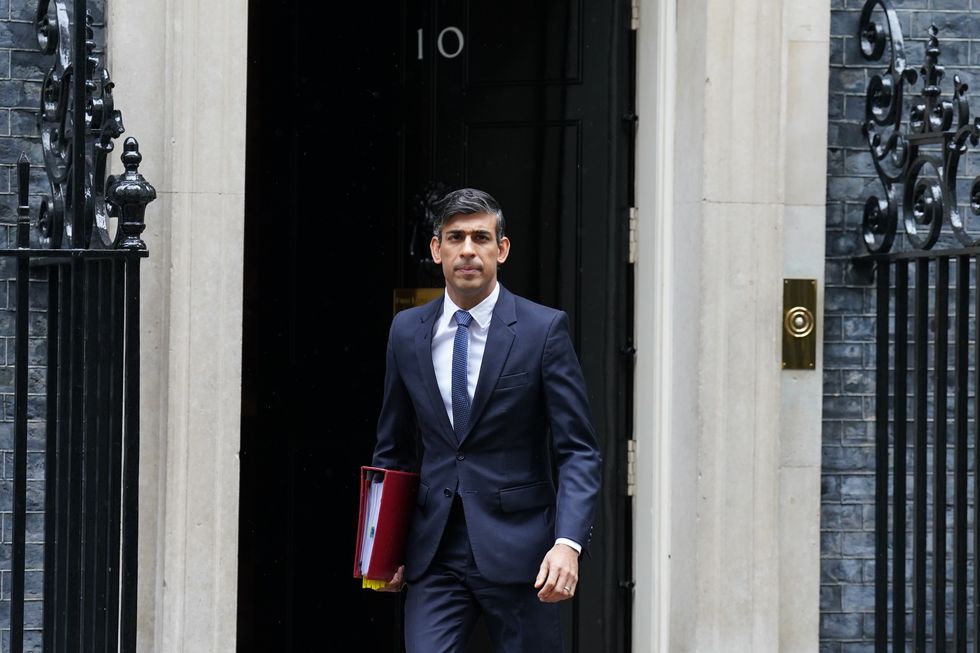How much ‘stealth’ tax freeze is costing you as Treasury set to rake in £52billion by 2027

The personal allowance and basic rate income tax band have been frozen until 2028
GETTY

The personal allowance and basic rate income tax band have been frozen until 2028
Hard-working Britons will pay thousands of pounds more in income tax due to the ongoing six-year freeze to the personal allowance and basic rate tax band.
New calculations show a person earning £25,000 at the start of 2021/22 will pay extra income tax £2,645 during the freeze while an earner on a £50,000 salary will pay £13,366 more in income tax, compared to if income tax allowances were inflation-linked.
Fresh estimates from the Institute for Fiscal Studies (IFS) yesterday show the tax freeze is set to net the government £52billion a year by 2027.
There are forecast to be 6.5 million more income taxpayers and 4.5 million more higher-rate taxpayers by 2027 than there were in 2020, due to the freeze, which is in place until 2028.
Laura Suter, head of personal finance at AJ Bell, said while there has been “lots of talk” of how much the frozen income tax bands will generate for the Government, there’s been “little mention” of how much it will cost the average worker.
She said the decision to freeze the income tax bands amid high inflation and wage growth has left a “big dent in many people’s take-home pay”.
Ms Suter added: “It’s costing the average worker thousands of pounds in extra tax over the duration of the freeze.”
September’s inflation figure, which the Office for National Statistics (ONS) today confirming this was 6.7 per cent, would usually set the increase for next year’s personal allowance and basic rate tax band.
Ms Suter said: “Had Rishi Sunak not put tax bands in a deep freeze we’d all be able to earn 6.7 per cent more tax-free from April next year and have the same percentage increase in the basic rate band, before 40 per cent income tax is due.
“However, taxpayers will instead face another year with frozen allowances, at a time when inflation is far above the government’s two per cent target and wage growth continues to surge ahead.”
The standard personal allowance is currently frozen at £12,570, and income above this level up to £50,270 falls in the 20 per cent basic rate tax band.
If it has increased in line with inflation since April 2021, it would be £14,269 for the current 2023/24 tax year.
The higher-rate threshold, frozen at £50,270, would stand at £57,053 if it had increased with inflation.
From April, these allowances would have risen to £15,225 and £60,886, taking today’s inflation data into account, if the allowances were uprated as normal.
£25,000 salary at start of 2021/22 tax year:
£33,000 salary at start of 2021/22 tax year:
£50,000 salary at start of 2021/22 tax year:
£75,000 salary at start of 2021/22 tax year:
Source: AJ Bell. The income tax threshold growth is based on the actual CPI inflation rate or on OBR forecasts for future years. Figures assume wage growth, based on actual figures and future years are based on OBR forecasts.
LATEST DEVELOPMENTS:

Prime Minister Rishi Sunak froze the personal allowance with Chancellor Jeremy Hunt extending the freeze to 2028
PA
2021/22 – inflation rate of 3.1 per cent
2022/23 – inflation rate of 10.1 per cent
2023/24 – inflation rate of 6.7 per cent
2024/25 - inflation rate of 0.9 per cent *
2025/26 - inflation rate of 0.1 per cent*
2026/27 - inflation rate of 0.5 per cent*
2027/28 - inflation rate of 1.6 per cent*
* Based on forecasts in the latest OBR report of forecast CPI inflation each year